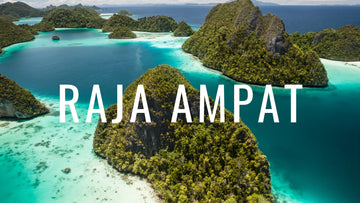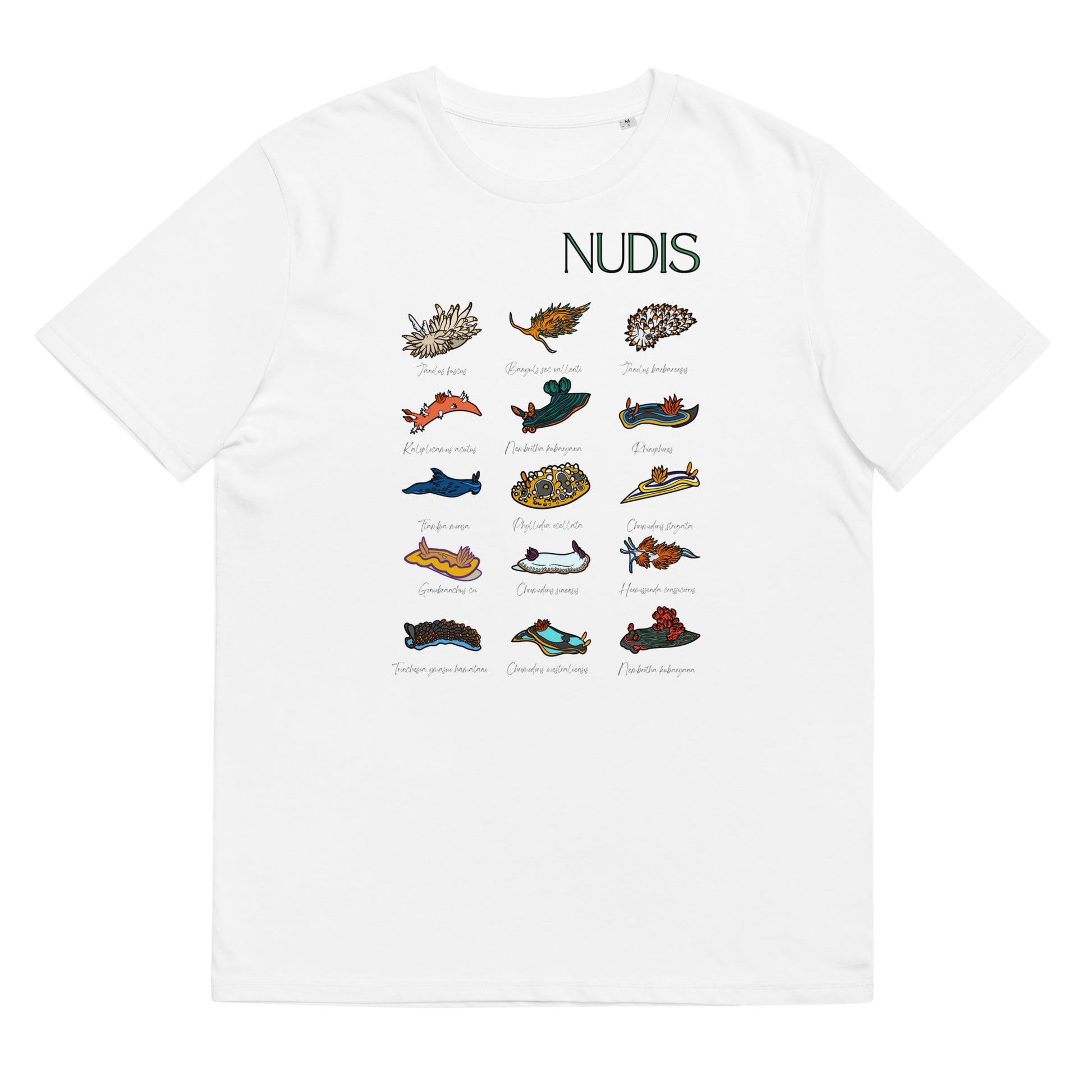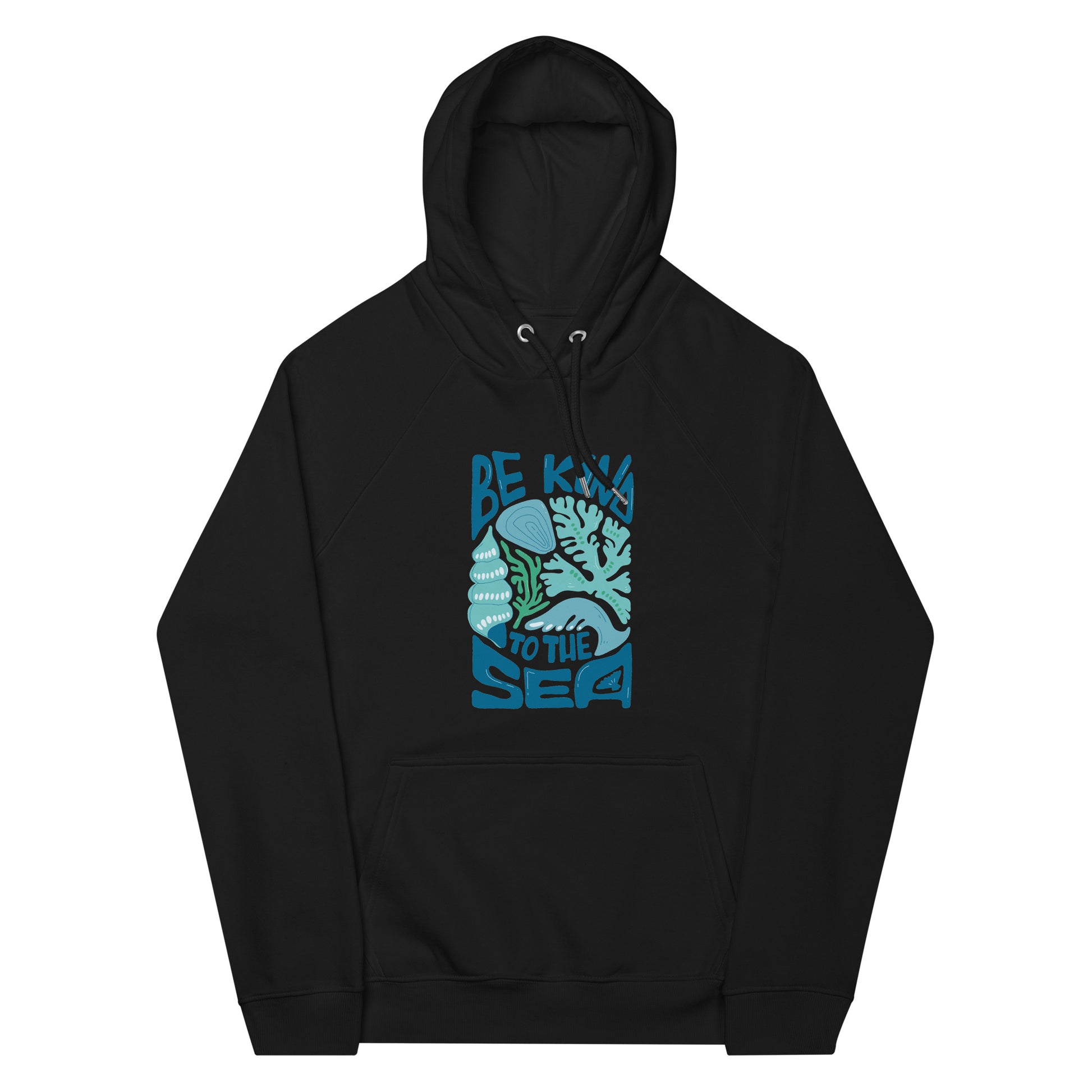Diving in Raja Ampat takes place around massive coral colonies that are protected from fishing and boast an iron health. This incomparable diving paradise is home to 600 species of coral (75% of all known coral species), more than 1,700 species of fish, 700 species of mollusks and some of the stars of the underwater world such as manta rays, mimic octopus, toadfish of a thousand sizes and colors, the most outstanding invertebrate colonies, whales, dolphins, hammerhead sharks, ghost pipefish or orangutan crabs.

Raja Ampat, (the four rajas or kings in reference to its 4 main islands Misool, Salawati, Batanta and Waigeo) is an archipelago of more than 1,500 islands with one of the richest marine national parks in the world in terms of biodiversity.
T-shirts designed by divers for divers
VIEW MORE T-SHIRTS FOR DIVERS
With an extension of 40,000 km2, it is the largest in all of Indonesia... and that is saying a lot. Situated in the heart of the Coral Triangle, it is a compendium of marine life that can be found in the most privileged area on the planet for diving, combining the best of Indonesia, the Philippines and Papua New Guinea.
When to dive in Raja Ampat?
Although there are excellent local resorts and dive centers, the best way to get to know the underwater world of Raja Ampat is on a liveaboard or liveaboard dive boat, which will take you to the best dive sites in the area between the months of October and the end of April (the best time to dive in Raja Ampat), although it is possible to find a few boats that operate throughout the year.
During the months of July to mid-September, strong winds and rain can cause rough seas and some dive centers may close during this time.

The trips between the dive sites are also interesting in Raja Ampat. Pic by PTorrodellas
In addition to the area's incredible fauna, there is another ingredient that makes diving in Raja Ampat an unforgettable experience. The slow navigation between unspoiled islands, paradisiacal, dreamy, happy, far from civilization, gives the dives a magical halo that adds value to the dives. All this makes Raja Ampat a hard to beat destination.
The best dive sites in Raja Ampat
"Boo Island" is an islet where gorgonians, barrel sponges, soft corals and various forms of acropora compete for space in this colorful landscape. Along the wall of this reef you will find a variety of nudibranchs, shrimps feeding on giant sea cucumbers, schools of unicorn fish, blue surgeonfish or hundreds of fusiliers swarming between the two pinnacles that form this point. This overpopulated site is visited by green turtles that will not pay you the slightest attention as they feed on sponges and there is no shortage of batfish, sweetlips, titan triggerfish or butterflyfish.
The limestone cliffs of "Farondi Island" offer an extraordinary underwater landscape. Tunnels, caves, corridors and finely decorated walls make this dive an Asian luxury. Soft corals of all colors, giant turbinaria, purple and yellow ascidians provide an amazing luminosity to which hundreds of blue and yellow damselfish are added. Ghost pipefish begin to appear in the black corals and between the tunnels are sheltered sweet lips, needlefish or nudibranchs. Of particular interest are the gorgonians, which host several species of pygmy seahorses, and the very long whip corals. On the sandy bottoms of this site it is possible to find mimic octopuses, so watch out for the movements of this curious cephalopod.

The gorgonians that inhabit the seabed of Raja Ampat allow pygmy seahorses to proliferate. Pic by NeilStead
Book Your Diving Trip to Raja Ampat
SEE ALL DIVING OFFERS IN RAJA AMPAT
The "Kri Island" is one of the areas of Raja Ampat that has more variety and quantity of fauna, being common to see you surrounded by giant schools of jacks and tuna and the most appreciated place for environmental photography. The reef has huge table corals that hold many species, highlighting the buffalo parrot fish gnawing on the coral, the strange carpet sharks or wobbegong, clown fish, sweet lips, giant napoleons, whitetip sharks, and hopefully some Goliath grouper weighing 400 kg.
As with almost all good dive sites in Indonesia, there are several areas where you can see flying manta rays. At 'Manta Ridge' you will find a cleaning station where no less than 5 mantas will appear together... and sometimes as many as 30! The strong currents attract the large groups of manta rays for their daily cleaning, so grab a good spot on the reef and get ready for action. Out of nowhere their majesties the mantas will appear and circle around the wrasse to feast on them. If that is not enough, in "Manta Ridge" we can see sunfish, groups of buffalo parrotfish, butterfly fish, leopard fish... Without a doubt one of the best dives in Indonesia.

Raja Ampat boasts one of the most spectacular cleaning stations in Indonesia
The dive site "Fabiacet" consists of a series of pinnacles that have the best visibility in Raja Ampat. Very deep and clear waters that allow you to see up to 40 meters in one of the spots in the area where you can dive with hammerhead sharks.
Hoodies Designed for the Deck of Your Liveaboard
SEE MORE SWEATSHIRTS FOR DIVERS
The shallow outer wall is a spectacle of dark corals and sponges where fusiliers, surgeonfish and spotted rays reside. A swim through the channel leading from the pinnacle will reveal huge red gorgonians with Napoleon wrasses, green turtles, schools of various snappers, elegant unicorn fish, mandarin fish, large groupers, parrot fish and good schools of barracudas.
The "Kaleidoscope" lives up to its name with an unparalleled array of colors. This gently sloping wall is visited by manta rays, napoleon wrasses of unmanageable size and the strangest creatures, from toadfish to ghost pipefish, pygmy seahorses and a variety of nudibranchs and flatworms. It is a place where night dives are highly appreciated.
Gamfi Island receives strong nutrient-rich currents that attract many species and provide plenty of food for the corals, where it is common to find a legion of buffalo parrotfish crunching the hard corals with their impressive teeth. In the shallow waters the corals also suffer the onslaught of green turtles and large schools of carangids, giant jacks or yellowtail barracudas appear around this reef. The dangerous but elusive sea snake can also be seen in the caves or swimming in the open sea, as well as the poisonous blue-ringed octopus. Macro enthusiasts also have a good opportunity to get their best shots at Gamfi, where nudibranchs are abundant and colorful colonies are easy to find.

Blue-ringed octopus in Raja Ampat
Between the islands of Wayilbatan and Walib, in the southern region of Raja Ampat, there is a channel more than 30 meters wide known as "The Passage" with a spectacular array of corals. Bright oranges, vibrant yellow-greens, intense reds and purples that will leave you gasping for breath even in poor visibility. Many species of seahorses live here and can even be seen in groups on some of the gorgonian fans.
The walls are covered with nudibranchs looking for their favorite coral and one of the stars is the Thecacera (also known as Pikachu because of its appearance).

The curious nudibranch Thecacera is reminiscent of the famous Pokemon Pikachu
The passage is also home to colorful crinoids, a fascinating variety of frogfish. The rare Novaculichthys taeniourus, a rare member of the labrids, also resides here. When the current is strong we can see some large species such as mantas, yellowfin barracudas and squadrons of eagle rays.
"Wofoh Island" has three dive sites that allow for different dives. From wall diving on the "Blue Wall" which drops to 40 meters and is covered with hard corals, barrel sponges and soft corals. We will also see schools of surgeon fish, some shy unicorn fish and black and gray tip sharks. On the other side of the island is the "Black Forest", so called because of the presence of black corals, home to pygmy seahorses and some of Indonesia's strangest creatures.

The carpet shark or wobbegong is very present in the waters of Raja Ampat. Pic by yohancha
"Fam Jef" is a picturesque group of a dozen limestone islands stretching west from Batanta Island. There are many channels with shallow entrances where you can explore some of the best coral in Raja Ampat. In this area is Melissa's Garden, a coral garden where carpet sharks are usually found, as well as large barracudas and the occasional manta ray. The southern slope is covered with leaf and mushroom corals, small green sea pens, spiny tube sponges, table, staghorn or elkhorn.
 Porcelain crab looking for a safe place in an anemone. Image by NeilStead
Porcelain crab looking for a safe place in an anemone. Image by NeilStead
This site is fantastic to see angelfish, which come in many shapes and colors, as well as the territorial and aggressive titan triggerfish. One of the most interesting species to be found here is the Giant Clam (Tridacna gigas), which can be found at a depth of 6 meters and can reach over a meter in length and 100 years old. To the north of this area is a ridge where we can find clown triggerfish, anemones or porcelain crabs.



























